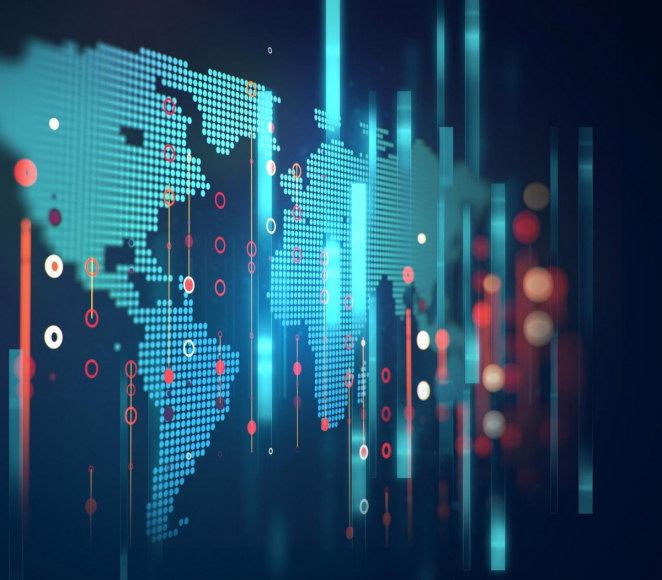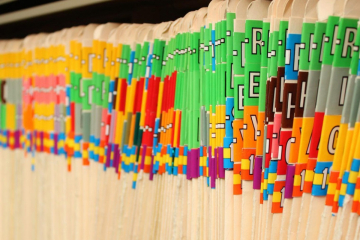As consumers become increasingly aware, engaged, and mobilized around the sustainability challenges our world faces, food and beverage companies are under mounting pressure to adapt to evolving consumer expectations and rising demand for more action and transparency. After all, the food and beverage sector is one of the largest users of natural resources, putting them in a position of duty and opportunity to create meaningful change.
But how can food and beverage companies continuously level up their tactics and strategies to meet expectations, bolster their bottom lines, and make the world a better place? Well, that’s where we see big data and analytics playing a major role now and into the future.
Of course, the rise of big data and enhanced analytics is a hot topic across all industries, but we see some unique trends and opportunities for the food and beverage segment. Below, several of our internal sustainability experts—as well as financial analyst and Chief Editor of AgFunderNews, Louisa Burwood-Taylor—share their insights on how big data and analytics are already reshaping sustainability strategy, as well as predictions for what the future may hold.
Insight 1: Our power to assess supply chain risks and vulnerabilities will grow
In a world where climate change can impact every part of the supply chain, now is the time for food and beverage companies to take action to bolster supply chain continuity—and their bottom lines. And big data can help, according to Antea Group's Senior Consultant and Water Stewardship Solution Leader. Here’s what he had to say on the subject:
In the old days, our only source of geological and geographical information was NASA. Today, we have satellites covering nearly every square meter of our world.
As a result, we’re collecting important and useful geographical data that can be analyzed and combined with other on-the-ground data sources, such as local weather events and patterns, to paint the current picture—and use trends to predict what’s to come. This means that you can better understand where your vulnerabilities and risks are now—and even more so into the future.
For example, your company likely has operations that span the globe, and one of the greatest threats to your business is the disruption of supply chain continuity due to natural disasters fueled by climate change. With the use of the right tools—and by asking the right questions—you can understand where your highest risk areas are for droughts, floods, and landslides.
Thanks to the influx of data, Antea Group has actually designed our own predictive risk assessment tool, using data outputs from a variety of vetted data sources to assess risks, make predictions, and help design proactive strategies for addressing vulnerabilities.
Insight 2: Big data and analytics will fuel further technological disruption in the agricultural sector
The agriculture industry is at an especially crucial turning point. The industry is not only contending with increased production demands as the global population swells, but is also having to find ways to deal with the environmental impacts and supply chain risks triggered by climate change. But on top of it all, according to Louisa Burwood-Taylor, they’ve been left behind technologically—making it ripe for disruption.
There are already at least 4,000 early-stage technology companies investing in the space today, with many more yet to come,” she reports. “Investors are also looking to fill the void—right now, investment in agriculture represents 3% of venture capital funding, yet the industry represents 10% of global GDP.”
Where does big data and analytics fit in? Here’s what Burwood-Taylor recently shared in our eBook Change or Be Changed: The Future of Food & Beverage in Now:
Big data and analytics includes the likes of ground sensors, satellites, drones, machine learning, and robotics and automation, which together mostly add up to what could be called “precision agriculture.”
These technologies can create prescriptive plans for farmers, build variable rate fertilizer maps to save cost and reduce environmental impact, help with water audits and managing water balance sheets, and support produce freshness measurement and tracking, among other things.
The takeaway? Agriculture companies need to embrace technology, as well as big data and analytics, or risk losing out.
Insight 3: Usage of NFC tagging will grow, enhancing transparency and communication with consumers
According to Sustainability Practice Project Manager Owen McKenna, NFC tagging—which refers to the use of passive electronic tags on product labeling—is a rising big data trend in the food and beverage sector. Why? To put it simply, NFC tagging can not only help companies engage the more than 1 billion consumers with NFC-capable smartphones, but also help them track their supply chain traceability—which McKenna dives more deeply into below:
Historically, product labeling has served the sole purpose of enticing consumers to notice and pick up a product. There really isn’t much space on already crowded labels to reflect product sustainability, save for a symbol here or there (i.e. organic, fair trade, etc.) at the periphery. NFC tags allow consumers to access, and for companies to curate, information tailored specifically to the consumers identified preferences; meta-labels if you will.
Let’s take your customers in water-stressed regions as an example. With NFC tags, you can provide those consumers with specific information on your company’s efforts to combat water shortages there, and then show them how their purchase of your product helps further those efforts.
On the other side of the coin, NFC tagging enables near complete supply chain transparency. It’s common practice at the farm scale for bags of cocoa or coffee beans to be tracked via colored string. Adding NFC tags takes that process into the 21st Century, allowing products to truly be tracked by anyone with a smartphone, so shipments aren’t lost, efficiencies can be determined throughout the supply chain, product spoilage and tampering can be prevented, and accurate carbon footprints can be calculated.
While the technology is in its infancy, costs are dropping dramatically, and I think it will become widespread over the next decade with a myriad of applications—many of which can be tied into corporate sustainability.
Insight 4: Big data will help reveal clearer pathways to creating shared value
With the food and beverage sector relying heavily on natural resources to grow, process, and distribute their products, many companies have emerged as sustainability leaders out of necessity—as well as the genuine desire to make a lasting impact.
But today’s most forward-thinking businesses are looking beyond sustainability as a business strategy, and redefining their purpose to focus on creating shared value. According to John Platko, Chief Strategy Officer, big data can help uncover the pathway to purpose and better ROI. Here’s what he had to say on the subject:
Economic value connected to sustainability is typically generated in one of three ways:
1. Cost avoidance via better risk management
2. Cash savings through improvements in efficiency
3. New revenue/market share gains because of innovation or differentiation clearly tied to environmental or social “features”
In the past, data to validate associated benefits attributable to these efforts have been limited at best, often having decision makers call into question the viability of ROI forecasts. But with increasingly large data sets about the monetary consequences (or potential consequences), as well as data on consumer preferences and behaviors, becoming increasingly available and robust—we can discover more actionable insights than ever before.
As a result, with data and insights in-hand, we can develop sustainability programs that bring the most value simultaneously for nature, society, and business, all of which are forecasted in ways that are clearer and more credible.
Insight 5: With the ability to converge data sets from multiple sources, context will enhance sustainability efforts
From reducing water and energy usage to enhancing waste management, global food and beverage companies have been working hard to sustainably optimize their facilities for decades. But having the right data to level up their efforts—inside and outside facility walls—has proven to be one of the greatest challenges in the past.
But according to Nick Martin, Senior Consultant and Sustainability Practice Leader, that challenge is turning into opportunity thanks to big data.
There’s little doubt that the rise of big data and analytics will help food and beverage make more rapid, efficient, and “surgical” decisions. With more data and better tools to analyze it, companies can go beyond gut feelings or “what’s been working” to have credible insights that spur informed decisions, meaningful action, and better optimization.
But perhaps one of the greatest emerging opportunities with big data is our enhanced ability to make connections—in both the private and public sector—that were never possible before. With the ability to bring in other data sets such as weather and local watershed size, structure, and demographics, we’re able to uncover both quantitative and qualitative insights that bring context to light.
In addition, this ability to gather a larger variety of data and make connections to your own business will lead to superior benchmarking—leading companies will become obvious and underperforming companies will no longer be able to hide.
The Future Is Now
From our perspective, the future has already arrived—and it’s important that food and beverage industry professionals be prepared to understand, predict, and adapt to a myriad of rising trends—from big data and analytics and beyond.
For a more in-depth look at macro-trends, industry disruptors, and new technologies, as well as tips and insights to help you adapt to the changing industry landscape, read our free eBook: Change or Be Changed: The Future of Food & Beverage is Now.
Want more news and insights like this?
Sign up for our monthly e-newsletter, The New Leaf. Our goal is to keep you updated, educated and even a bit entertained as it relates to all things EHS and sustainability.
Get e-NewsletterHave any questions?
Contact us to discuss your environment, health, safety and sustainability needs today.





